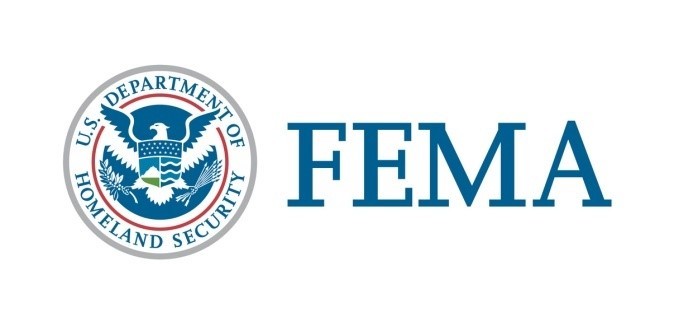|
FEMA ADVISORY – April 7, 2020
Coronavirus (COVID-19) Pandemic
Whole-of-America Response
Attached you will find today’s FEMA Daily Briefing Points for the Whole-of-America response to coronavirus (COVID-19) pandemic. These briefing points include Topline Messages, as well as information associated with FEMA and Department of Health and Human Services (HHS) Response; FEMA Response Capacity; Strategic National Stockpile; CDC Public Guidance; CDC Respirator Guidance; Hydroxychloroquine/ Chloroquine; FDA Ventilator Guidance; National Guard Activation (Title 32); Community-Based Testing Sites; Defense Production Act; and Other Federal Response.
Topline messaging includes:
- FEMA, HHS, and our federal partners work with state, local, tribal and territorial governments to execute a whole-of-America response to COVID-19 pandemic and protect the health and safety of the American people.
- On March 31, the president extended the nation’s Slow the Spread campaign until April 30.
- The American people are critical in the campaign to slow the virus’ spread and keep high-risk populations safe.
- For updates and information on how to protect yourself, visit www.coronavirus.gov.
- FEMA Project Air Bridge expedites movement of critical supplies, in varying quantities, from the global market to medical distributors in various locations across the U.S.
- The air bridge was created to reduce the time it takes for U.S. medical supply distributors to receive personal protective equipment and other critical supplies into the country for their respective customers.
- FEMA covers the cost to fly supplies into the U.S. from overseas factories, reducing shipment time from weeks to days.
- While FEMA schedules daily flights, it does not have detailed visibility on PPE amounts until the cargo is loaded.
- As of April 6, 13 flights have landed, containing critical personal protective equipment (PPE): gloves, gowns, goggles, and masks.
- Seven flights are scheduled to arrive today, 6 in Chicago and 1 in Los Angeles. This is the greatest number of air bridge flights in a single day since the start of the program.
- An additional 72 flights are scheduled over the next three weeks.
- Overseas flights arrive at operational hub airports for distribution to hotspots and nationwide locations through regular supply chains. Flight arrivals do not mean supplies will be distributed in the operational hub locations.
- Per agreements with distributors, 50 percent of supplies on each plane are for customers within the hotspot areas with most critical needs. The remaining 50 percent is fed into distributors’ normal supply chain to their customers in other areas nationwide.
- HHS and FEMA determine hotspot areas based on CDC data.
- HHS is releasing $160 million dollars in additional CDC funding to dozens of regional hotspots for effective response to the worsening situation in their jurisdictions.
- The Strategic National Stockpile has begun shipping doses of hydroxychloroquine to New York and Los Angeles County based on their requests.
- Considering both scarcity of ventilators in the Strategic National Stockpile (SNS) and current capacity of the private sector to meet demand, the federal government has adopted a process to manage federal ventilator resources to ensure the right amount of ventilators are shipped to the to the right states to manage the immediate crisis.
- The federal government has 8,644 total ventilators available: 8,044 in the Strategic National Stockpile; 600 from the Department of Defense.
- As of April 6, FEMA and HHS have provided or are currently shipping, 8,920 ventilators from the Strategic National Stockpile (SNS) and the Defense Department to: Alaska (60), California (170), Connecticut (50), Florida (200), Georgia (150), Guam (30), Illinois (600), Louisiana (350), Maryland (120), Massachusetts (100), Michigan (700), New Jersey (1,350), New York (4,400), Oregon (140), and Washington (500).
- Governor Brown of Oregon sent the state’s 140 ventilators directly to New York; and,
- Governor Inslee of Washington is returning 400 of the state’s 500 ventilators to the SNS to be deployed to areas of greatest need.
- Governor Newsom of California is sending 500 state-owned ventilators to medical hotspots across the country through Emergency Management Assistance Compacts (EMAC).
- Additional allocations in process include a 250-bed Federal Medical Station and a Public Health strike team for Michigan; and a 250-bed Federal Medical Station for the Metro D.C. area.
- Forty states, four territories and 24 tribes have issued stay-at-home orders.
Contact Us
If you have any questions, please contact FEMA Office of External Affairs, Congressional and Intergovernmental Affairs Division:
Follow Us
Follow FEMA on social media at: FEMA online, on Twitter @FEMA or @FEMAEspanol, on FEMA Facebook page or FEMA Espanol page and at FEMA YouTube channel.
Also, follow Administrator Pete Gaynor on Twitter @FEMA_Pete.
FEMA Mission
To help people before, during and after disasters.


|